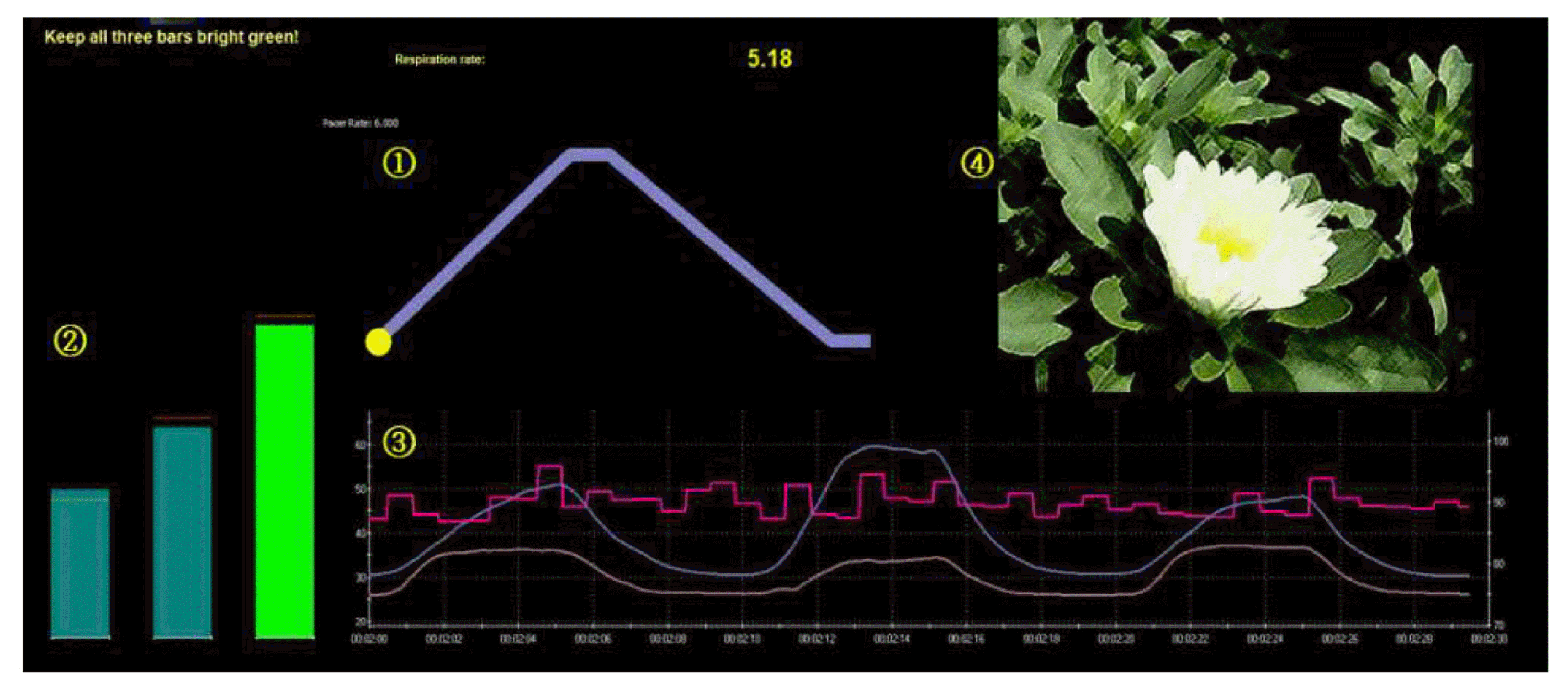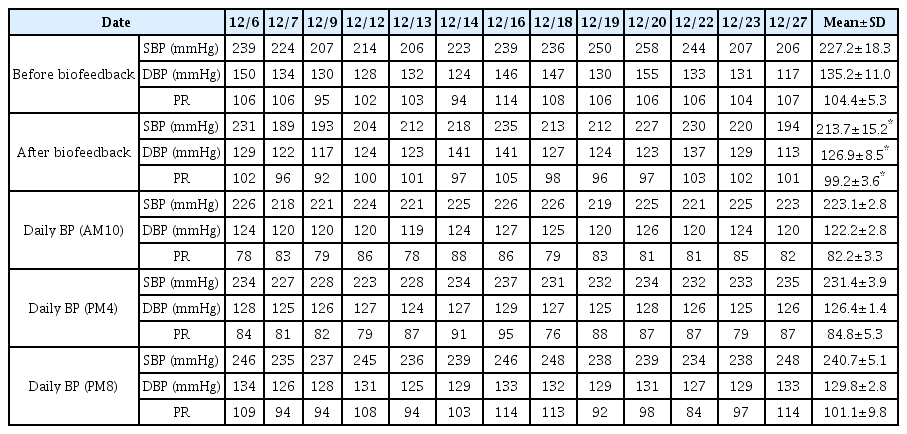The short-term effect of Blood Pressure Reduction after Biofeedback in Malignant Hypertension: A case report
Article information
Abstract
Objectives
The purpose of this study was to report the short-term blood pressure-lowering effects observed in a patient with malignant hypertension through slow breathing maneuver with heart rate variability(HRV) biofeedback.
Methods
Biofeedback sessions, totaling 13, each lasting 10 minutes, were administered. Blood pressure was measured pre and post-treatment, as well as thrice daily at 10 am, 4 pm, and 8 pm. Systolic blood pressure(SBP), diastolic blood pressure(DBP), and pulse rate were recorded for comparative analysis.
Results
Before biofeedback, the average SBP, DBP, and pulse rate were 227.2±18.3, 135.2±11.0, and 104.4±5.3, respectively. Immediately post-biofeedback, these values changed to 213.7±15.2, 126.9±8.5, and 99.2±3.6. However, sustained long-term blood pressure reduction was not observed.
Conclusions
The findings suggest that biofeedback therapy induces a short-term reduction in blood pressure in cases of malignant hypertension, potentially associated with autonomic nervous system regulation. Integrating biofeedback with other Korean medicine treatments, such as acupuncture or moxibustion, may offer a comprehensive approach for managing malignant hypertension.

Introduction of Biofeedback program.
① The blue line is pacer. The patient should breathe in and breathe out following the yellow dot. ② The indicators are VLF, LF and HF of heart rate variability from the left. ③ The pink line is the data of respiratory sinus arrhythmia. Blue and brown lines are the data of respiration sensors. ④ Compensation video is activated when breathing at the resonance frequency.

